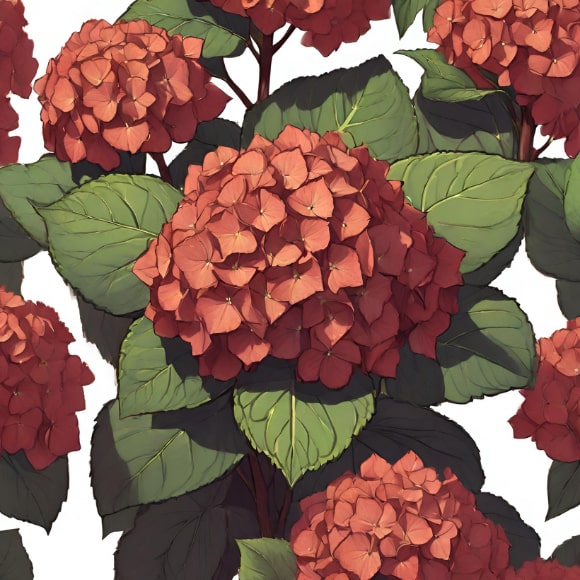
Hydrangeas, with their lush foliage and stunning blooms, are a beloved addition to gardens across the United States. To successfully cultivate these beautiful shrubs, understanding the plant hardiness zones is crucial. Plant hardiness zones provide valuable information about the climatic conditions a plant can thrive in, helping gardeners make informed decisions about which hydrangea varieties are best suited for their specific regions.
What Are Plant Hardiness Zones?
Plant hardiness zones are a classification system developed to guide gardeners in selecting plants that are likely to thrive in their particular climate. The United States Department of Agriculture (USDA) established the plant hardiness zone map, dividing the country into zones based on average annual minimum Winter temperatures. Each zone represents a 10-degree Fahrenheit difference in temperature.
Identifying Your Zone
Before embarking on hydrangea gardening, it’s essential to determine your specific hardiness zone. The USDA Hardiness Zone Map is readily available online and is a valuable tool for gardeners. By entering your zip code or location, you can identify your zone and gather essential information about the typical Winter temperatures in your area.
Understanding Hydrangea Hardiness
Different hydrangea varieties have specific hardiness preferences, making it crucial for gardeners to match their chosen hydrangeas with the appropriate hardiness zone. Here are some popular hydrangea species and their general hardiness zones.
Bigleaf Hydrangea (Hydrangea macrophylla)
This hydrangea species, known for its large and showy blooms, is commonly found in zones 6 to 9. In colder zones, providing Winter protection, such as mulching, is often recommended.
Panicle Hydrangea (Hydrangea paniculata)
Panicle hydrangeas, including varieties like “Limelight” and “PeeGee,” are more cold-hardy and can thrive in zones 3 to 8. They are well-suited for northern climates.
Smooth Hydrangea (Hydrangea arborescens)
Varieties like “Annabelle” belong to this species and are generally hardy in zones 3 to 9. They are appreciated for their round, snowball-like blooms.
Oakleaf Hydrangea (Hydrangea quercifolia)
Oakleaf hydrangeas, with their distinctive lobed leaves, are well-adapted to zones 5 to 9. They are known for their excellent Fall foliage.
Climbing Hydrangea (Hydrangea anomala petiolaris)
This climbing hydrangea can tolerate colder temperatures and is often found in zones 4 to 8. It adds vertical interest to gardens with its climbing habit.
Hydrangea Gardening Tips for Different Zones
Zones 3-6 (Cold Climates): Choose Cold-Hardy Varieties
Opt for hydrangea varieties that are known for their ability to withstand colder temperatures. Panicle hydrangeas and smooth hydrangeas are excellent choices for these zones.
Winter Protection: In extremely cold climates, consider providing Winter protection for your hydrangeas. This may include mulching around the base of the plant to insulate the roots from harsh Winter conditions.
Zones 7-9 (Warm Climates): Select Heat-Tolerant Varieties
In warmer zones, it’s crucial to choose hydrangea varieties that can withstand heat and thrive in milder Winters. Bigleaf hydrangeas and oakleaf hydrangeas are well-suited for these climates.
Morning Sun, Afternoon Shade: Provide hydrangeas with morning sunlight and afternoon shade to protect them from intense afternoon heat. This helps prevent wilting and ensures vibrant blooms.
Zone 10 (Subtropical Climate): Special Considerations
In Zone 10, where temperatures can be subtropical, hydrangea gardening requires careful selection of heat-tolerant varieties. Adequate shade and moisture are essential for the well-being of hydrangeas in these climates.
Watering: Ensure consistent and deep watering, especially during dry periods. Hydrangeas in subtropical climates may benefit from additional hydration to compensate for higher temperatures.
Adjusting pH for Hydrangea Flower Color
Apart from hardiness zones, gardeners should also be aware of the impact of soil pH on hydrangea flower color. For certain hydrangea species, such as bigleaf hydrangeas, soil pH influences whether the blooms will be pink or blue. Acidic soils (lower pH) tend to produce blue flowers, while alkaline soils (higher pH) result in pink flowers.
Gardeners can manipulate the soil pH by using amendments like aluminum sulfate to lower pH for blue blooms or adding lime to raise pH for pink blooms. Understanding both hardiness zones and soil pH provides a comprehensive approach to successful hydrangea gardening.
Hydrangea gardening in the United States is a rewarding endeavor, offering a diverse array of hydrangea species suitable for different climates. By familiarizing yourself with the plant hardiness zones and specific requirements of your chosen hydrangea varieties, you can create a thriving and beautiful garden filled with these enchanting shrubs. Whether you’re in the snowy landscapes of Zone 3 or the subtropical climate of Zone 10, there’s a hydrangea variety waiting to add its unique charm to your garden.


 Previous
Previous

